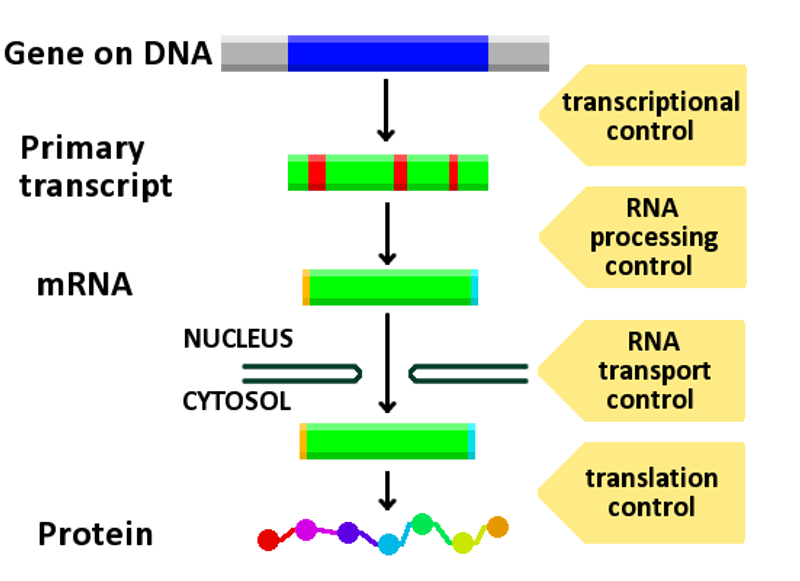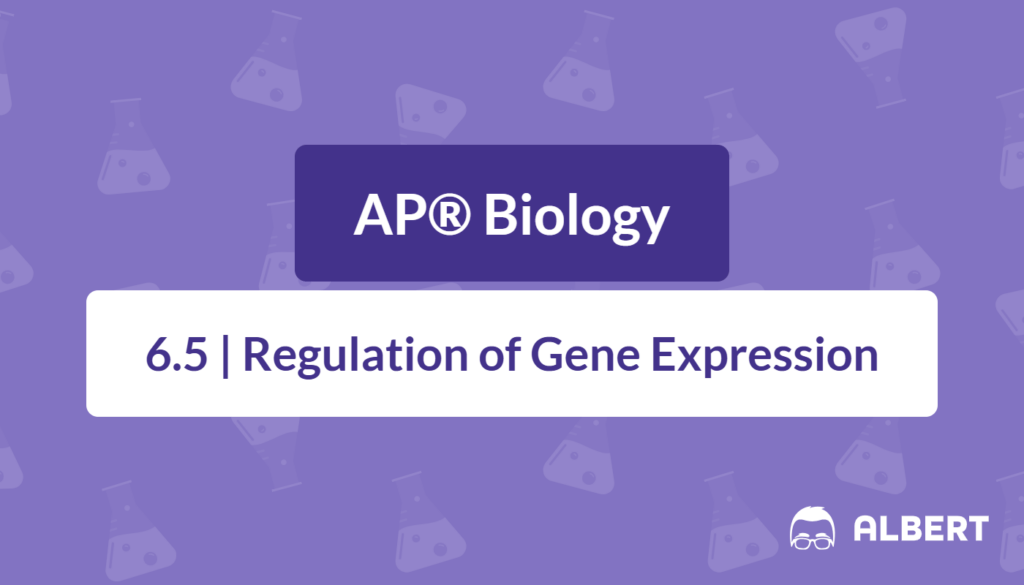What We Review
Introduction
Gene expression is one of the most fundamental concepts in biology. It explains how information stored in DNA eventually becomes functional proteins. An understanding of gene expression and its regulation not only helps us appreciate the intricacies of cellular function but also underscores critical processes like development, disease, and biotechnology applications. In this article, we’ll explore what gene expression is, how it’s regulated in both prokaryotes and eukaryotes, and why this topic is particularly important for AP® Biology students.
What Is Gene Expression?
Gene expression refers to the process by which the information encoded in a gene is used to direct the assembly of a protein molecule. In simpler terms, it’s how a cell interprets its DNA and turns certain genes “on” or “off.” Two main steps characterize gene expression:
- Transcription: The DNA sequence of a gene is copied into messenger RNA (mRNA).
- Translation: The mRNA is then read by ribosomes to synthesize the specific amino acid sequence of a protein.
For AP® Biology, remember that gene expression is remarkably precise. Depending on various factors, different genes are transcribed in different cells, at different times, and in different amounts.
Regulation of Gene Expression
Cells don’t express every gene all the time. Rather, they control when and how genes are expressed using mechanisms that respond to internal and external signals. Several layers of control exist, including transcriptional, post-transcriptional, translational, and post-translational regulation.

A. Types of Interactions That Regulate Gene Expression
Regulatory sequences within DNA provide binding sites for regulatory proteins or transcription factors. These proteins can either enhance or repress gene transcription by interacting with RNA polymerase and other core transcriptional machinery. Mastering which sequences attract or repel these factors—and why—is key to understanding gene regulation.
B. Epigenetic Regulation of Gene Expression
When we define epigenetics, we often say it involves changes in gene expression that occur without altering the underlying DNA sequence. These heritable modifications can “turn up” or “turn down” gene activity. Epigenetics examples include:
- DNA methylation: The addition of methyl groups (–CH3) to cytosine bases in DNA can suppress gene expression.
- Histone modification: Histones are proteins around which DNA is wound. Chemical modifications like acetylation or methylation alter histones, affecting how tightly DNA is packaged and influencing gene accessibility for transcription.
One critical thing to note is the reversible nature of these epigenetic changes. Cells can switch them on or off as needed, making epigenetic mechanisms highly dynamic and responsive to the environment.
C. Phenotypic Expression
Ultimately, the combination of all active genes in a cell determines its phenotype (observed traits). During development, cells express certain genes in a regulated sequence. Transcription factors act in a cascading manner—each factor can “induce” the production of the next one, shaping developmental pathways. This explains why cells in your liver look and act differently from cells in your brain, despite containing the same DNA.
Regulatory Sequences and Their Function
Genes come with on/off switches called regulatory sequences, which control when and how strongly a gene is expressed.
A. Location of Regulatory Sequences
In eukaryotes, regulatory sequences like enhancers or silencers can be located far from the gene they regulate, and DNA looping allows transcription factors to interact with these sequences. In prokaryotes, regulatory elements (promoters, operators) are usually close to the genes they control, simplifying the regulatory structure.
B. Operons in Prokaryotes
Operons are clusters of functionally related genes controlled by a single on/off switch. The lac operon in E. coli is a classic example of an inducible system:
- Promoter: Where RNA polymerase binds.
- Operator: The “switch.” A repressor may bind here to prevent transcription.
- Genes: The series of genes that encode proteins necessary for lactose metabolism.
When lactose is present, it binds to the repressor, preventing the repressor from binding to the operator. As a result, cells transcribe the genes responsible for lactose metabolism.
C. Coordinated Gene Regulation in Eukaryotes
In eukaryotic cells, transcription factors often work in groups to regulate sets of genes simultaneously. This coordinated gene regulation is essential during processes like embryonic development, where multiple genes must turn on in the correct order and at the correct levels.
Practice Problems and Illustrations
- Diagram an operon, labeling the promoter, operator, and structural genes. Explain how an inducible operon works compared to a repressible operon.
- Provide an example of how DNA methylation can silence gene expression. How might removing methyl groups reactivate a gene?
- Describe how a specific transcription factor can coordinate the expression of multiple genes involved in a developmental process.
Conclusion
From understanding what gene expression is to exploring complex regulatory networks, the regulation of gene expression is central to all areas of biology. It is the blueprint for cellular diversity, development, and adaptability. AP® Biology students will benefit from mastering these concepts as they form a foundational pillar of understanding in genetics, molecular biology, and biotechnology.
By reviewing these concepts and testing yourself with examples, you’ll gain the confidence needed to tackle AP® Biology questions on gene regulation. Understanding the subtleties of gene regulation will also give you a greater appreciation for the dynamic nature of cellular life—an understanding that is crucial for any aspiring biologist or medical professional.
Sharpen Your Skills for AP® Biology
Are you preparing for the AP® Biology test? We’ve got you covered! Try our review articles designed to help you confidently tackle real-world math problems. You’ll find everything you need to succeed, from quick tips to detailed strategies. Start exploring now!
Need help preparing for your AP® Biology exam?
Albert has hundreds of AP® Biology practice questions, free response, and full-length practice tests to try out.








